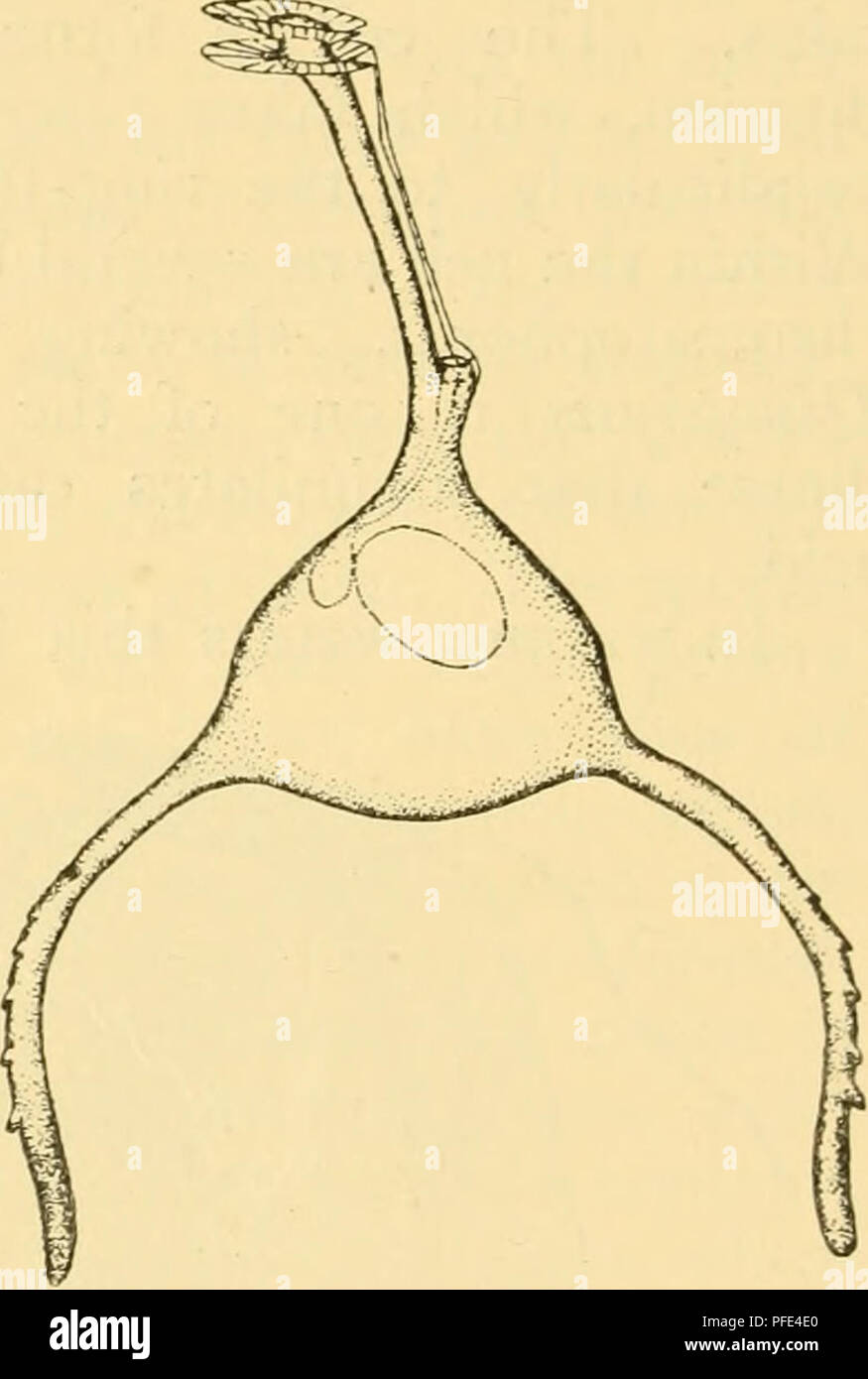. The depths of the ocean : a general account of the modern science of oceanography based largely on the scientific researches of the Norwegian steamer Michael Sars in the North Atlantic. "Michael Sars" North Atlantic Deep-sea Expedition (1910); Oceanography; North Atlantic Ocean. ,28 DEPTHS OF THE OCEAN more expanded, and the two bent legs which issue from it do not lie in quite the same plane, with the result that in sinking the cell describes very long sweeps. Besides these we get other genera, where the suspension-organs are not formed by the Oniithocercus. Cell itself, but by th

Image details
Contributor:
Central Historic Books / Alamy Stock PhotoImage ID:
PFE4E0File size:
7.1 MB (138.1 KB Compressed download)Releases:
Model - no | Property - noDo I need a release?Dimensions:
1297 x 1926 px | 22 x 32.6 cm | 8.6 x 12.8 inches | 150dpiMore information:
This image is a public domain image, which means either that copyright has expired in the image or the copyright holder has waived their copyright. Alamy charges you a fee for access to the high resolution copy of the image.
This image could have imperfections as it’s either historical or reportage.
. The depths of the ocean : a general account of the modern science of oceanography based largely on the scientific researches of the Norwegian steamer Michael Sars in the North Atlantic. "Michael Sars" North Atlantic Deep-sea Expedition (1910); Oceanography; North Atlantic Ocean. , 28 DEPTHS OF THE OCEAN more expanded, and the two bent legs which issue from it do not lie in quite the same plane, with the result that in sinking the cell describes very long sweeps. Besides these we get other genera, where the suspension-organs are not formed by the Oniithocercus. Cell itself, but by the membrane-curtains. In Ornithocei^cus splendid2is the ring - borders are transformed into an un- mistakable parachute, stiffened by a network of ribs (see Fig. 234, a), and in some species, such as O. steinii and O. qtiadratus, the membrane-curtains are ventrally or posteriorly most highly developed (see Fig. 234, b). The majority of these more different- iated forms are without chromato- phores, but some of them by way of compensation are in almost constant symbiosis with small brown naked cells that are prob- ably immobile stages of brown flagellates. In Oriiithocercus 7nagniJicuSy for instance, we find these naked cells in the space between the ring-borders, where they are well protected against harm (see Fig. 235) ; and in a series of species of the remarkable Histioneis. tropical genus Histioneis this home of theirs is expanded pos- teriorly into a cavity which may be of considerable dimensions as compared with the cell. In Citharistes. Citkaristes the cavity takes up the whole of what should be the central portion of the cell, and the cell-membranes are merely the outer skin like the shell of a guitar (see Fig. 236). A remarkable subdivision of the peridinese is the genus Pyrocystis. Pyvocystis, which Sir John Murray discovered during the "Challenger" Expedition. Pyrocystis noctihica (see Fig. 237) has large globular cells with a thin layer of protoplasm along